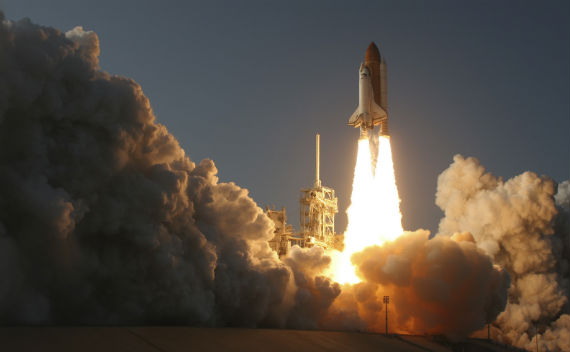Security and U.S.-Sino Scientific Collaboration
More on:

This does not look like a great idea. According to Science (behind paywall), Representative Frank Wolf (R–VA) inserted two sentences in the bill that averted the federal government shutdown prohibiting "any joint scientific activity between the two nations involving NASA or the White House Office of Science and Technology Policy (OSTP)." It is not clear how sweeping the provision is, and it only extends until the end of fiscal 2011, but the article quotes Wolf as saying he would like to shut down all collaboration: "We don’t want to give [China] the opportunity to take advantage of our technology, and we have nothing to gain from dealing with them.”
The motivation for this type of thinking is clear. The Chinese are trying to acquire advanced technology from the United States and other advanced economies. Some they get legitimately through scientific partnerships and commercial joint ventures; some not so legitimately through industrial or cyber espionage. The technology, no matter how acquired, can make its way to the People’s Liberation Army.
The United States should try and prevent the diffusion of critical technologies to the Chinese military. But a blanket ban on all collaboration is unlikely to work. For space technology, the Chinese will simply turn to the Europeans, Brazilians, or others. In fact, a 2008 CSIS task force concluded: “Export control policy has not prevented the rise of foreign space capabilities, and in certain cases may have helped other countries to develop such capabilities."
Moreover, the cure cannot be worse than the disease. As I argue in Advantage, defending old technology is rarely as important as creating the new. For the United States, the basic equation is simple: economic strength and national security depend on innovation, and innovation thrives only with openness. New ideas are emerging from laboratories in China; U.S. scientists and entrepreneurs need access to them.
Being closely connected with technology development in China is an important safeguard for U.S. policymakers against unwelcome surprises. With American companies and universities involved there, intelligence agencies should gain a sense of what is happening inside China: what technologies are being developed, what the Chinese have purchased from abroad, how the technologies are being used, and what weaknesses can be exploited.
So caution and wariness, yes. Blanket bans and an end to all collaborations, no.
More on:
 Online Store
Online Store
